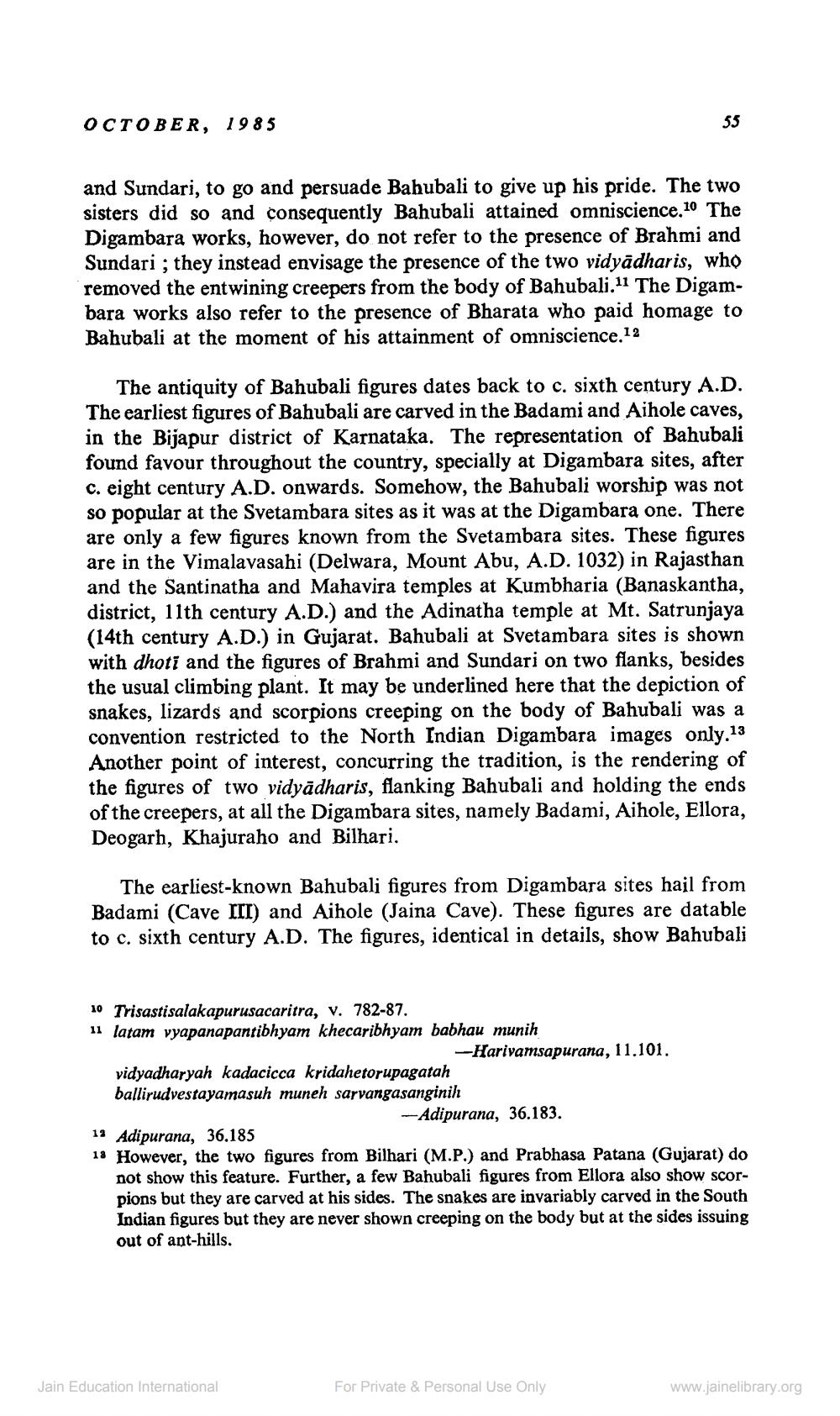________________
OCTOBER, 1985
and Sundari, to go and persuade Bahubali to give up his pride. The two sisters did so and consequently Bahubali attained omniscience.10 The Digambara works, however, do not refer to the presence of Brahmi and Sundari ; they instead envisage the presence of the two vidyādharis, who removed the entwining creepers from the body of Bahubali. 11 The Digambara works also refer to the presence of Bharata who paid homage to Bahubali at the moment of his attainment of omniscience.12
The antiquity of Bahubali figures dates back to c. sixth century A.D. The earliest figures of Bahubali are carved in the Badami and Aihole caves, in the Bijapur district of Karnataka. The representation of Bahubali found favour throughout the country, specially at Digambara sites, after c. eight century A.D. onwards. Somehow, the Bahubali worship was not so popular at the Svetambara sites as it was at the Digambara one. There are only a few figures known from the Svetambara sites. These figures are in the Vimalavasahi (Delwara, Mount Abu, A.D. 1032) in Rajasthan and the Santinatha and Mahavira temples at Kumbharia (Banaskantha, district, 11th century A.D.) and the Adinatha temple at Mt. Satrunjaya (14th century A.D.) in Gujarat. Bahubali at Svetambara sites is shown with dhoti and the figures of Brahmi and Sundari on two flanks, besides the usual climbing plant. It may be underlined here that the depiction of snakes, lizards and scorpions creeping on the body of Bahubali was a convention restricted to the North Indian Digambara images only.13 Another point of interest, concurring the tradition, is the rendering of the figures of two vidyādharis, flanking Bahubali and holding the end of the creepers, at all the Digambara sites, namely Badami, Aihole, Ellora, Deogarh, Khajuraho and Bilhari.
The earliest-known Bahubali figures from Digambara sites hail from Badami (Cave III) and Aihole (Jaina Cave). These figures are datable to c. sixth century A.D. The figures, identical in details, show Bahubali
10 Trisasti salakapurusacaritra, v. 782-87. 11 latam vyapanapantibhyam khecaribhyam babhau munih
--Harivamsapurana, 11.101. vidyadharyah kadacicca kridahetorupagatah ballirudvestayamasuh muneh sarvangasanginih
-Adipurana, 36.183. 1: Adipurana, 36.185 18 However, the two figures from Bilhari (M.P.) and Prabhasa Patana (Gujarat) do
not show this feature. Further, a few Bahubali figures from Ellora also show scorpions but they are carved at his sides. The snakes are invariably carved in the South Indian figures but they are never shown creeping on the body but at the sides issuing out of ant-hills.
Jain Education International
For Private & Personal Use Only
www.jainelibrary.org




